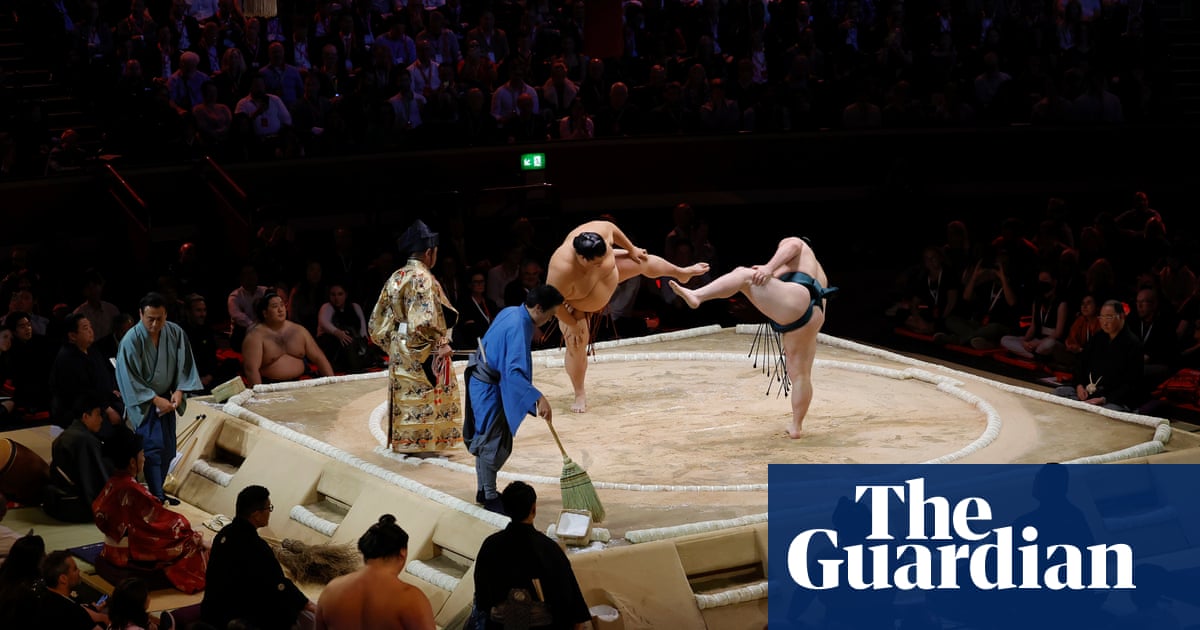
"The clay, shipped up from Kettering, where, the experts said, the earth had just the right consistency, had been shaped, sculpted, pounded into a stage, the six-tonne wooden canopy had been joined, and hung from the roof, the rice-straw bales had been beaten into shape with empty beer bottles, brought over especially for the purpose, and laid in a circle around the ring, the arena had been blessed by three priests, doused with saki, and strewn with salt."
"There were corporate sorts, charging their bar bills to company expenses, a troop of diplomats, going to glad hand the Japanese ambassador at a VIP reception, and an awful lot of sumo super fans, some of them big men with beards, who first fell in love with the sport when it was on Channel 4 in the early 90s, some of them slight young women head-to-toe in Comme des Garcons, some middle-aged salarymen holding banners decorated with pictures of their favourite rikishi."
A professional sumo dohyo was constructed in London over four days, using clay shipped from Kettering and a six-tonne wooden canopy, with rice-straw bales shaped for the ring. The arena received ceremonial blessings from three priests, was doused with saki and strewn with salt. An eager, diverse crowd gathered beneath streaming banners, including corporate guests, diplomats and devoted sumo fans wearing varied fashions and carrying banners for favourite rikishi. Scalpers circulated, with prime seats fetching around five hundred quid. The event marked the first official tournament outside Japan in 34 years and combined sporting competition with sacred ritual.
Read at www.theguardian.com
Unable to calculate read time
Collection
[
|
...
]